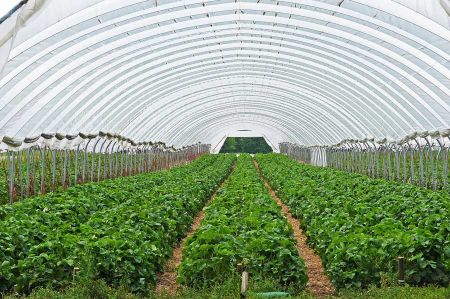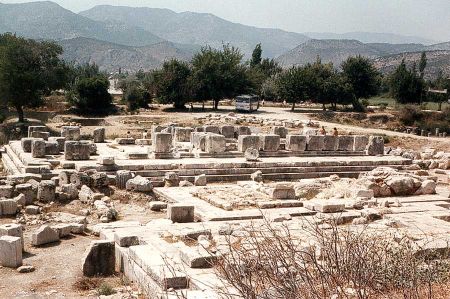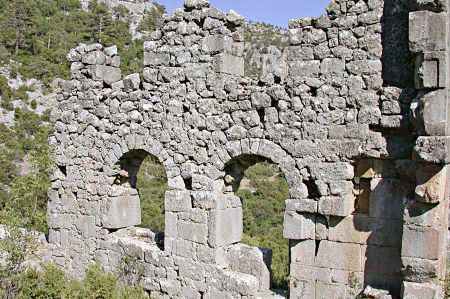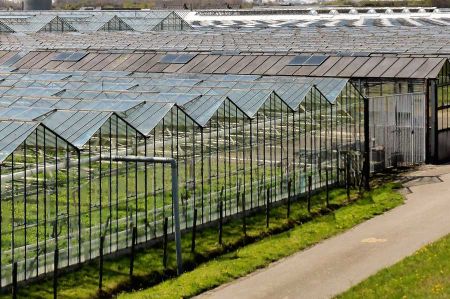Kumluca, the fruit and vegetable garden of Antalya
- Written by Portal Editor
After leaving Antalya on highway 400, passing Kemer, Phaselis and Olympos, the road rises briefly to more then 500 meters above sea level. Reaching the other side, the view falls down to the valley and plain of Kumluca in Finike Bay, well known for its fruit and vegetable growing.
And right! As if there is a sea of greenhouses, one looks at countless greenhouses that shimmer in the sun with their transparent foil coverings. Just about 94 kilometers west of Antalya, it is this "garden" that supplies the city of Antalya.
The fruit and vegetable garden of Antalya - Kumluca
 As you get closer, it becomes immediately clear what is being grown here in the greenhouses and orchards, mostly with several harvests a year. In addition to tomatoes, cucumbers and courgettes, the plantation owners, who are mostly run as family businesses, also plant oranges, lemons and tangerines. Due to the thousands of years of erosion in the Taurus, caused by the immense rain and snowfall in winter, a very fertile soil has built up as alluvial land in the Bay of Finike, which is used very productively. Even in hot summer, the river Alakir Cayi and its dam in the mountains provide so much water that fruit and vegetables in the plantations can be supplied with water all year round, which unfortunately also causes heavy flooding of the plain from time to time.
As you get closer, it becomes immediately clear what is being grown here in the greenhouses and orchards, mostly with several harvests a year. In addition to tomatoes, cucumbers and courgettes, the plantation owners, who are mostly run as family businesses, also plant oranges, lemons and tangerines. Due to the thousands of years of erosion in the Taurus, caused by the immense rain and snowfall in winter, a very fertile soil has built up as alluvial land in the Bay of Finike, which is used very productively. Even in hot summer, the river Alakir Cayi and its dam in the mountains provide so much water that fruit and vegetables in the plantations can be supplied with water all year round, which unfortunately also causes heavy flooding of the plain from time to time.
Kumluca has become a purely administrative and shopping town for its residents as well as for the surrounding villages. Once a week, on Fridays, there is a large weekly market divided into two parts, a fruit and vegetable market and a textiles market. Right in the city center on the road to Antalya you will find the fruit and vegetable market, the clothing market is a little further away on the road to Altinyaka.
The Hinterland - Beydağlari Olympos National Park
 In the hinterland of Kumluca, the district belonging to the city extends far past Kemer to almost Antalya, so the Beydağlari Olympos National Park also belongs to Kumluca. Besides some highly interesting ancient cities such as Kitanaura (Saraycik) between Altinyaka and Gölcük, Cormus near Kirdirek and Rhodiapolis and Korydalla just outside Kumluca, there are extremely interesting geological formations of volcanic origin in the surrounding mountains. For those wanting to head into the mountains, we recommend stopping in Altinyaka to dine at one of the trout restaurants. In general, a large number of the more than 100 mountain villages in the Kumluca district and along the road towards Altinyaka and further towards Gölcük are well worth seeing.
In the hinterland of Kumluca, the district belonging to the city extends far past Kemer to almost Antalya, so the Beydağlari Olympos National Park also belongs to Kumluca. Besides some highly interesting ancient cities such as Kitanaura (Saraycik) between Altinyaka and Gölcük, Cormus near Kirdirek and Rhodiapolis and Korydalla just outside Kumluca, there are extremely interesting geological formations of volcanic origin in the surrounding mountains. For those wanting to head into the mountains, we recommend stopping in Altinyaka to dine at one of the trout restaurants. In general, a large number of the more than 100 mountain villages in the Kumluca district and along the road towards Altinyaka and further towards Gölcük are well worth seeing.
 The old Roman bridge near Limyra, on the road from Kumluca to Turunçova, is also worth a visit. With a length of 360 meters, it is one of the oldest segmental arch bridges with great technical and historical significance in the world. Unfortunately, Kumluca is still a long way from adequately honoring and protecting this treasure. The greenhouses have been built close together up to the pillars of the bridge.
The old Roman bridge near Limyra, on the road from Kumluca to Turunçova, is also worth a visit. With a length of 360 meters, it is one of the oldest segmental arch bridges with great technical and historical significance in the world. Unfortunately, Kumluca is still a long way from adequately honoring and protecting this treasure. The greenhouses have been built close together up to the pillars of the bridge.
There are no separate beaches for bathers in Kumluca, but there are in the towns of Mavikent (here is the ancient town of Gaggae) and Karaöz (here is the ancient town of Melanippe), which is more of a holiday home settlement. In general, the pure bathing holidaymaker is out of place here. The rich nature of the surrounding mountains is aimed more at hikers and mountaineers, because the Lycian Trail, coming from Antalya, also passes Kumluca on its way to Fethiye.
Please read as well:
